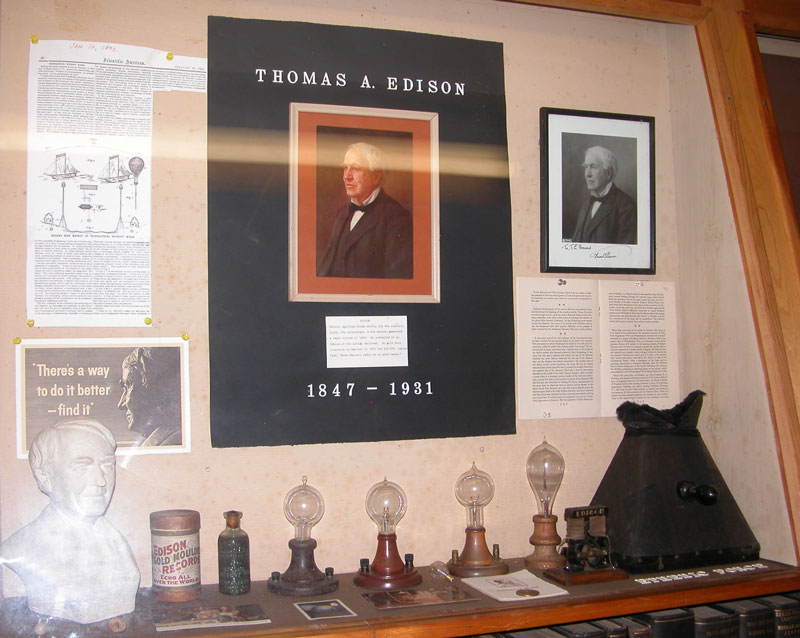This brings up the conflict with Marconi’s professor, Sir Ambrose Fleming, who worked for the Marconi Wireless Telegraph Company, and he patented an electron tube…the diode tube. This was around 1905. The interesting thing is that our I-Triple-E (IEEE, Institute of Electrical and Electronics Engineers), I guess in hands-across-the-sea friendship with the English, has not argued with the English patent, but in fact, Edison made a diode tube, and there is an original Edison diode tube, and he measured the current flow between the filaments of the plate…the electron had yet to be identified and discovered…so Edison, of course, hadn’t the foggiest idea why he was getting current between the filament and the plate…but he did…and it was known as the Edison Effect for a long time. That’s kind of unfortunate that people don’t really give Edison [credit].
See the plate in there? Inside? The English call that the Fleming Valve. I’ve always considered it a giant fraud. Because, here we have it, you know…thirty years before! But, unfortunately, Edison…the electron hadn’t been identified yet…that came just before Fleming’s experiments.
Also, Edison realized, much the same as Dolbear, that electrostatic fields, whether they be stationary or alternating, radiated some distance. And Edison patented a wireless system in 1892. That’s three years before anybody ever heard of Marconi. This was way in advance of Marconi.
Here are the two schooner’s with the elevated antennas, and the shore stations with elevated antennas, and ground plates and everything…and that’s 1892, and Marconi didn’t hit the scene until late 1895, and so when Marconi succeeded in crossing the Atlantic with the letter “S” in 1901, from Poldhu, England to Newfoundland, he came to New York City to be wined and dined. And all the big shots congratulated him, and so forth, among whom was Edison. And Edison was noted for a very friendly personality, and he was full of funny stories. He had a tremendous repertoire of funny stories. He was not a stiff guy at all. Anyway, the story is…that when he met Marconi…I think it was on the street in Manhattan, he slapped him on the back and he said, “Well done, young man! By the way, I have something that might be of interest to you.” And he showed him this patent. And he wound up selling it to Marconi for something like $30,000, allowing Marconi to clinch his claim.
But here’s Edison anticipating:
He experimented with etheric force for quite a while, and Colin Leath, if you’ll remember, made a replica of this, and what’s inside is a micrometer-adjustable carbon arc, and you can set it to a very fine gap…almost down to nothing. And if you have a strong field in the area, whether it be radio, or electrostatic, or whatever, the little arc would light up. Edison first discovered this at Menlo Park (New Jersey). The Menlo Park building was about twice the length of this building, and Edison had an organ at the end…he liked to play the organ to amuse the guys because they worked night and day…there was no start and finish to working hours…but anyway, he experimented with etheric force from one end of the building to the other. He had an induction coil making a spark at one end of the building, and he would walk this shadow box down the other end of the building watching the arc in there. So that’s why we gave it this name. Of course, Heinrich Hertz had not done his mathematical work yet, and nobody knew anything more about electromagnetic radiation. But Edison was ahead of it all right there.
Fred – “Are these similar here?”
No, these are light bulbs. These are just lights. Anyway, these are probably replica light bulbs that they made to celebrate Edison’s invention some years ago.
Text from the transcript of a tour of New England Wireless & Steam Museum’s Wireless Building given by Robert W. Merriam on a winter day in 2012. Transcription by Craig H. Moody, K1CHM. Edited by Fred Jaggi.
